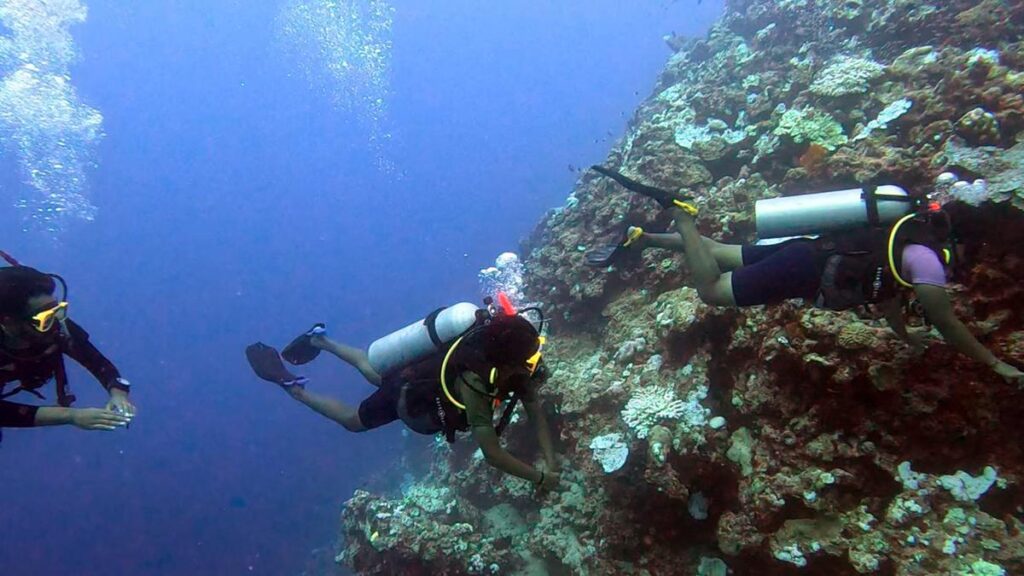
.Since 1998, researchers from the Nature Conservation Foundation have been tracking reef condition at three atolls across the Lakshadweep archipelago — Agatti, Kadmat and Kavaratti — to understand how reefs respond to climate change.
| Photo Credit: Photo for representation only
Concerning revelations have emerged from one of the longest-running coral reef monitoring programmes in the Indian Ocean. The 24-year-long study shows that corals in the Lakshadweep archipelago have declined to half of what they were in 1998 as a result of repeated marine heatwaves, exacerbated by climate change.
However, local conditions, such as wave exposure and depth, play essential roles in shaping how reefs respond to and recover from these events.
The study, ‘Local Environmental Filtering and Frequency of Marine Heatwaves Influence Decadal Trends in Coral Composition’, published in the journal Diversity and Distributions, uses long-term data sets to propose a predictive framework, which could help identify vulnerable reefs, and reefs that may still have the potential to recover.
Since 1998, researchers from the Nature Conservation Foundation have been tracking reef condition at three atolls across the Lakshadweep archipelago — Agatti, Kadmat and Kavaratti — to understand how reefs respond to climate change. This monitoring programme has monitored reefs as they declined and recovered from three major El Niño Southern Oscillation (ENSO) events — in 1998, 2010 and 2016.
The data was analysed to explore if changes in the composition of coral could be explained by the number of heatwaves experienced and by more local factors, such as seasonally strong wave action and depth at which corals are found.
Reduced recovery rate
“Over 24 years, coral cover declined from 37.24% to 19.6%, reflecting a roughly 50% reduction from the 1998 baseline. This decline was explained by reduced recovery rates after each bleaching event, despite coral mortality decreasing with successive events. Recovery rates dramatically increased after six years, suggesting a critical period of bleaching-free years needed for reefs to recover. We observed contrasting responses of coral genera, which clustered in six groups representing distinct assemblage-wide patterns in distribution (depth and wave exposure) and bleaching responses. Genera with different life histories clustered together, highlighting the importance of local environments in determining the survival and recovery of corals across taxa,” the researchers stated.
Species are expected to respond to disturbances according to their biological characteristics (life history traits), and the researchers expected that corals in Lakshadweep reefs will closely track their biology, as has been suggested by other studies, resulting in a clear set of winners and losers on the reef.
“What we found was much more nuanced. Over the 24 years of change, we identified not just two group of winners or losers, but six distinct kinds of responses (or clusters), based on how corals were affected by heatwaves, their recovery time, the depth at which they were found, and whether they grew on exposed or sheltered reefs. Importantly, these clusters are a useful predictive framework, which we can use to map other reefs across the archipelago and possibly beyond, to determine their susceptibility to climate change. This work offers an unprecedented tool to assist classifying corals based on their ability to resist and recover from future bleaching events, which can lead to meaningful spatial planning in the face of climate change — something that was unavailable for this region until now,” they stated.
Time is of essence
The researchers warn that no amount of local resilience and restoration efforts, especially in regions that do not support corals that make up a resilient cluster, can substitute urgent global climate action:
“The one thing reefs need to recover is time. Without a pause in the frequency of marine heatwaves, whatever resilience tropical reefs have is likely to be short lived. Our results show that less corals die simply because less is available to die in later years. In the long run, we must call the crisis by its name and acknowledge that the integrity of tropical reefs, like the rest of global biodiversity, cannot sustain the seemingly impervious logic of the prevailing economic order. Without scale-appropriate radical policies, laws, and actions to address these ultimate causes, anything we do locally for reefs will be symptomatic and palliative fixes.”
Published – July 24, 2025 03:21 pm IST

